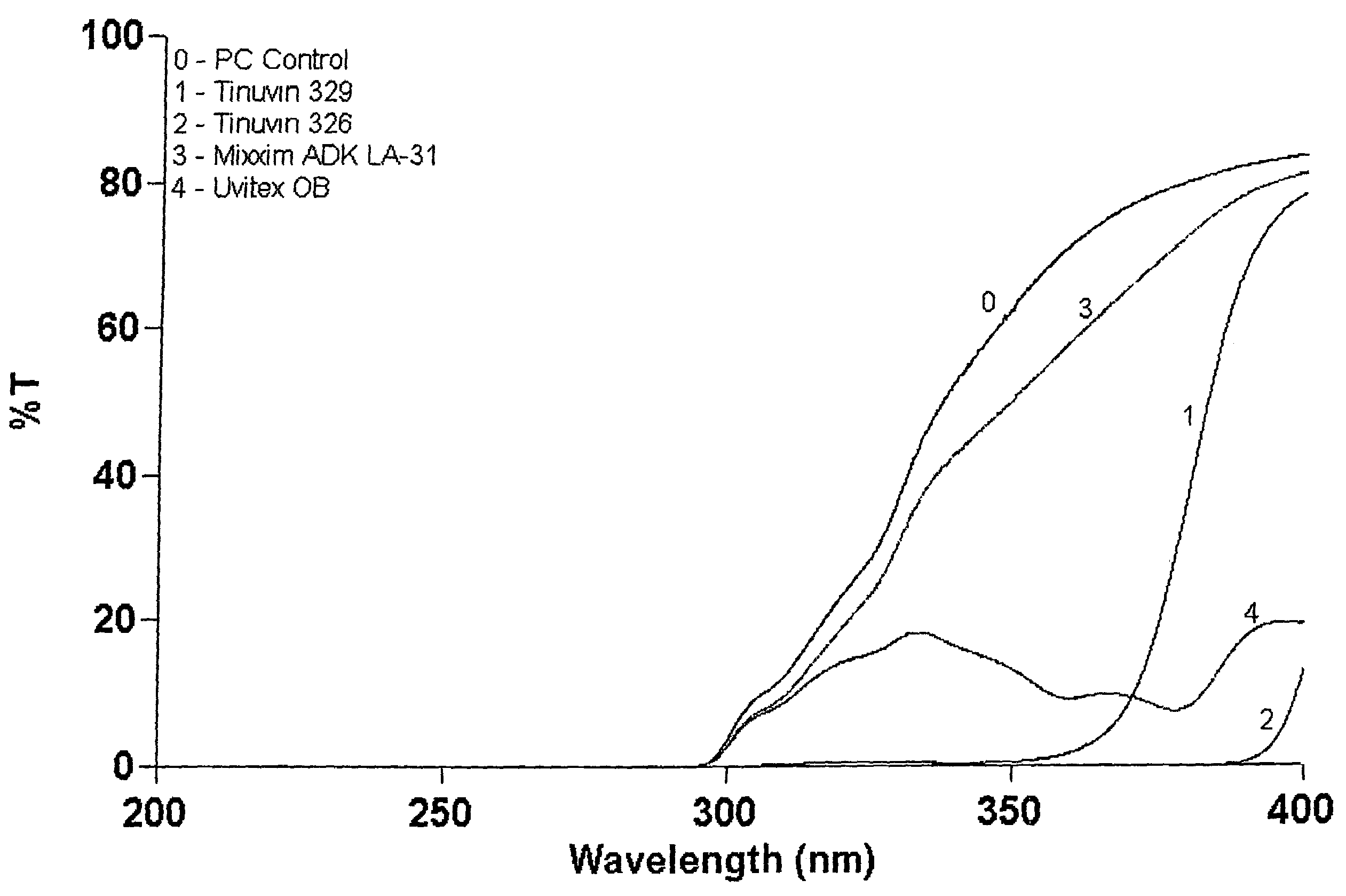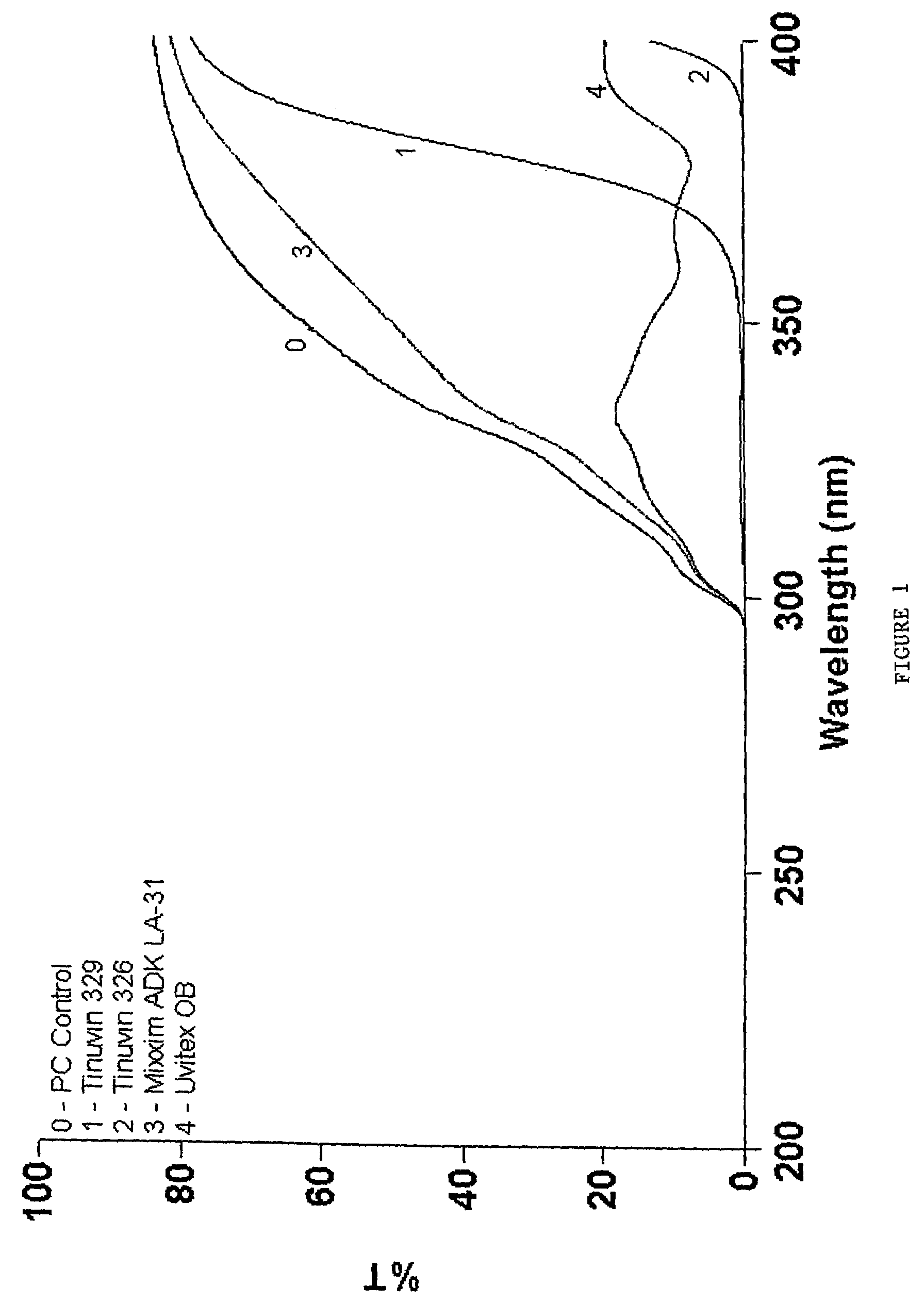Method of treating a plastic article
a plastic article and treatment method technology, applied in the field of plastic article treatment method, can solve the problems of sacrificing the physical properties of the plastic article, the direct incorporation method is not particularly well suited to minimizing, and the additive is substantially dispersed throughou
- Summary
- Abstract
- Description
- Claims
- Application Information
AI Technical Summary
Benefits of technology
Problems solved by technology
Method used
Image
Examples
examples
[0118]In the following examples, each treatment composition (bath) was prepared by mixing 18,976 grams of deionized water, 4929 grams of ethyleneglycol mono-butyl ether (as carrier), and 3081 grams of diethylene glycol (as diol) together in a mixing tank, thus forming a liquid mixture having a total weight of 26,986 grams. The liquid mixture was heated to 95° C., and then forwarded continuously through a bag filter into which 50 g of additive had been previously placed. The heated mixture containing the additive was cycled from the mixing tank through the bag filter and back to the mixing tank for a period of time sufficient to saturate the mixture of water, carrier and diol with the additive, and thus form the treatment bath. The treatment bath was recycled back to the mixing tank through small openings (having diameters of 4.8 mm) to enhance turbulent mixing of the treatment bath during treatment operations.
[0119]The initial cycling, for purposes of forming a saturated treatment b...
examples 1-4
[0121]The treatment compositions of examples 1-4 were prepared as described above. The additive used in each of the treatment compositions of examples 1-4 is described in the following Table 1.
[0122]
TABLE 1AdditiveExample 1Tinuvin 329 UV-stabilizer, which chemically is describedas 2-(2-hyroxy-5′tert-octylpheyl)benzotriazole, wasobtained commercially from Ciba Geigy.Example 2Tinuvin 326 UV-stabilizer, which chemically is describedas 2(3′-tertbutyl-2′-hydroxy-5-methylphenyl-5-chlorobenzotriazole), was obtained commercially fromCiba Geigy.Example 3Mixxim ADK LA-31 UV-stabilizer, which chemically isdescribed as bis(2-hydroxy-5-octyl-3)(2,4 benzotriazole-2-yl) phenylmethane, was obtained commercially fromAmfine Chemical.Example 4Uvitex OB optical brightener, which chemically isdescribed as 2,2′-(2,5-thiophenediyl) bis(5-tertburylbenzoxazole), was obtained commercially fromCiba Geigy.
[0123]Clear test specimens of molded thermoplastic polycarbonate having dimensions of 5 cm×7.5 cm×0.25 cm ...
PUM
| Property | Measurement | Unit |
|---|---|---|
| temperature | aaaaa | aaaaa |
| temperature | aaaaa | aaaaa |
| temperature | aaaaa | aaaaa |
Abstract
Description
Claims
Application Information
 Login to View More
Login to View More - R&D
- Intellectual Property
- Life Sciences
- Materials
- Tech Scout
- Unparalleled Data Quality
- Higher Quality Content
- 60% Fewer Hallucinations
Browse by: Latest US Patents, China's latest patents, Technical Efficacy Thesaurus, Application Domain, Technology Topic, Popular Technical Reports.
© 2025 PatSnap. All rights reserved.Legal|Privacy policy|Modern Slavery Act Transparency Statement|Sitemap|About US| Contact US: help@patsnap.com



